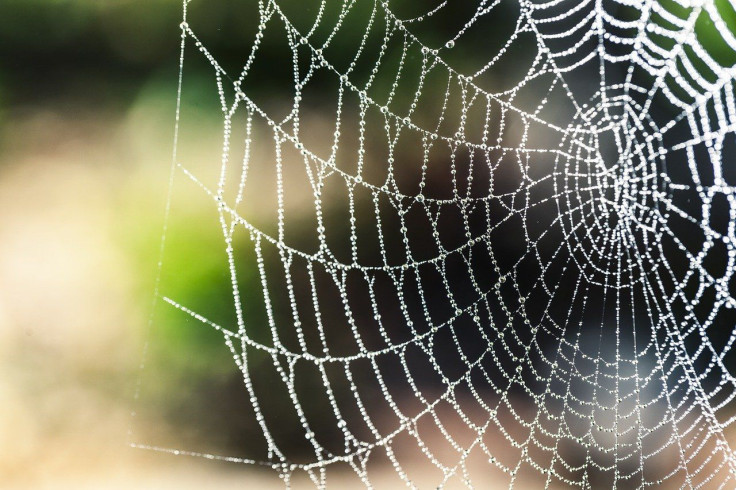This Tropical Spider Uses A 'Film Of Air' To Hide Underwater [Photo]
KEY POINTS
- Researchers observed a spider hiding underwater for about 30 minutes
- The thin hairs covering its body help provide a "hydrophobic surface"
- Observation provides insight into the genus and other spiders' antipredator tactics
What can a spider do when it's facing threat from a predator? Researchers observed a tropical species use a "film of air" to hide underwater for as long as 30 minutes.
When some animals feel threatened, they have to "seek refuge in unusual or suboptimal habitats," researchers noted in their study, published recently in Ethology. In their new work, the researchers reported their observation of the tropical Trechalea extensa spider fleeing from a threat--in this case, humans--and submerging itself underwater.
"'Semi-aquatic' spiders in the family Trechaleidae have not been documented using diving as part of their antipredator behavior and, indeed, they are rarely known to submerge themselves at all, as their aquatic foraging occurs from a terrestrial location," the researchers wrote.
"For a lot of species, getting wet and cold is almost as risky to survival as dealing with their predators to begin with," one of the study authors, Lindsey Swierk of the Binghamton University, said in the university news release.
However, the researchers even observed the Trechelea extensa take refuge underwater for a whopping 30 minutes following pursuit of the human threat. They also noticed that the spider appeared to be covered in a thin "film of air" that's kept in place thanks to the hairs covering its body, providing a "hydrophobic surface."
"The film of air might serve to keep the respiratory openings away from water since these spiders are air-breathing. The film of air might also help to minimize thermal loss to the cold stream water that the spider submerges itself in," Swierk said in the news release, noting that the spider even looked like it was "dipped in silver" because of the film of air.
Indeed, the spider looks rather striking in the photo shared by the Ethological Society.
Ethology: A team led by @LindseySwierk documented the prolonged underwater refuge use (> 30 min) of a Neotropical #spider not known to dive. They identified cuticular hairs that form an air plastron to facilitate respiratory function & reduce heat loss🤿🕷️https://t.co/B1K6LE3VR6
— Ethological Society (@EthoGes) April 20, 2022
Their observations expand the understanding of habitat use in the genus and even the "antipredator adaptations" of spiders in general, noted the researchers. This includes how they manage the risk of fleeing from predators.
"Risk of predation, yes, but also risk of the costs they'll experience by fleeing. For some species that means leaving territory or mates unguarded, or maybe spending stored energy in a sprint," said Swierk. "There are many more questions to dig into starting from this first observation."
This is not the first time that the researchers observed a creature using a similar adaptation as Swierk had previously observed a lizard species that hid underwater from predators.
An underwater peek at our quirky Anolis aquaticus ... just look at those lizard LIPS 💋 ! #lizardprince #herpetology #puravida pic.twitter.com/HzLLF60hYB
— Dr. Lindsey Swierk (@LindseySwierk) June 29, 2019
In the case of the lizard, it was able to stay underwater for an impressive 16 minutes.

© Copyright IBTimes 2025. All rights reserved.






















